The Australian sandalwood industry is booming. Oils, incense and cosmetics – the sandalwood tree supplies an increasing range of products for religious, commercial and medical purposes. In fact, demand is so high that sandalwood is the most commercially valuable timber in Australia! But what of the broader value the sandalwood tree? What role does the Santalum species play in our environment? What’s the future for these in-demand trees called hemiparasites? And what role does university ecological research play in ensuring their sustainable future?
To get some answers on all things sandalwood, we interviewed Richard McLellan. Richard’s a woodland ecologist whose bio includes working for the global conservation organisation World Wildlife Fund in Australia, Cambodia and Switzerland. He was set for a ‘relaxing retirement’ when a project from Charles Sturt University’s Institute for Land, Water and Society (ILWS) project came onto his radar.
The research project, led by Professor David Watson, was investigating how the hemiparasitic trees affect desert communities: integrating above-ground patterns with below-ground processes. (A hemiparasitic plant, by the way, is one that derives some nutrients from another plant.) The project needed a PhD student and Richard signed up.
“I’ve always wanted to go back and do a PhD and so this was the perfect topic, at the perfect time, with the perfect people, at the perfect place.”



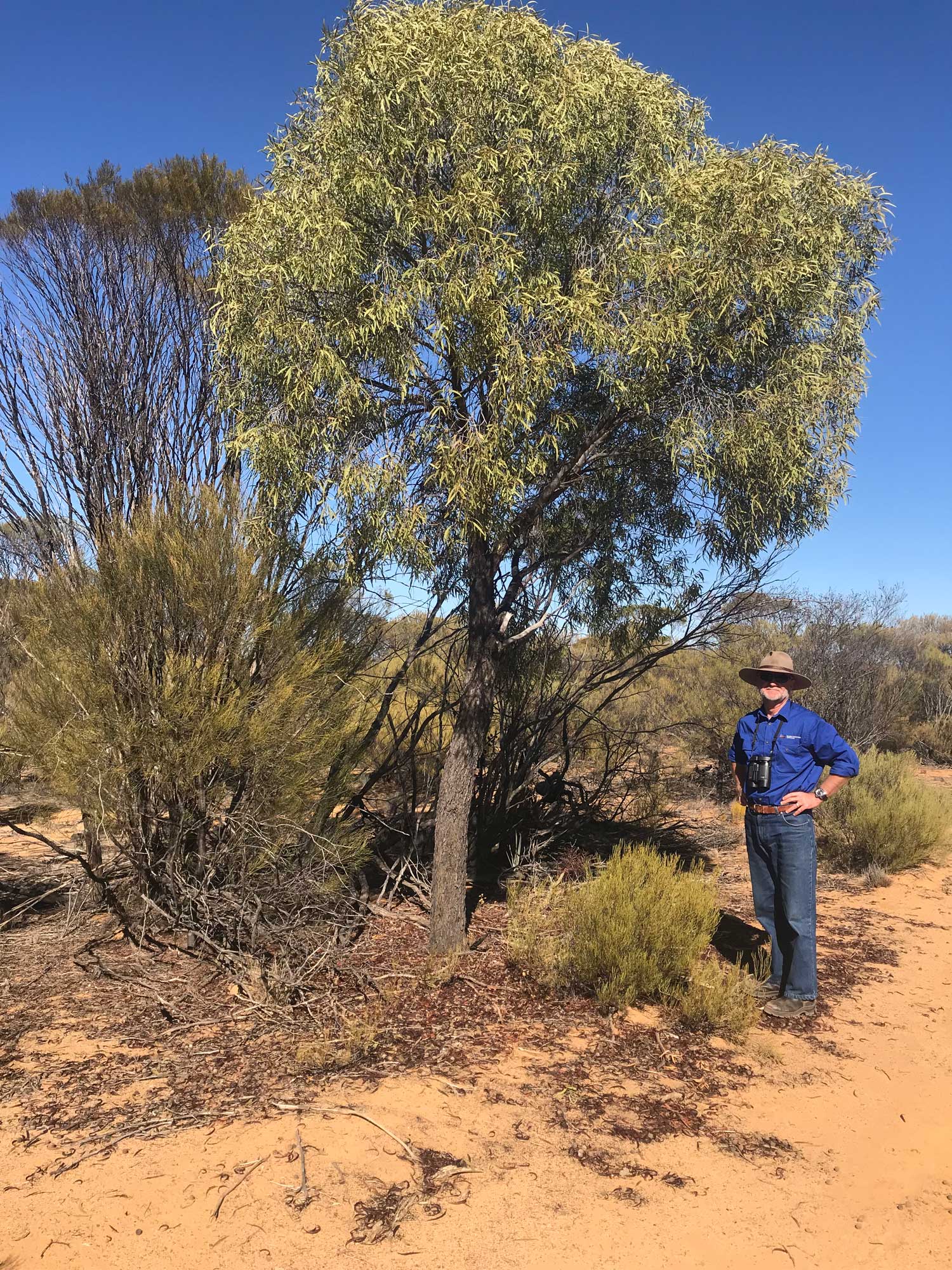
How important is the sandalwood tree ?
Richard applied for – and received – a ILWS postgraduate scholarship. He’s now working on a research project, based in Western Australia, that is aligned with Professor Watson’s work.
“There’s evidence that parasitic plants are keystone species – more important than other plants in their community. The project combines hemiparasites and the role that they play in the environment with information that is of use to land managers. How important is it to keep them in the landscape or involve them in restoration?
“While there’s been a lot of research done on the sandalwood tree, it’s mostly been in terms of what sandalwood can do for humans. There’s been almost no research in terms of what it contributes to the environment – what ecosystem processes they provide, what animals depend on them or whether they provide any micro-climate refuge benefits. My research is trying to determine sandalwood trees’ ecological value.”
The sandalwood tree enters the danger zone
Since 1844, Western Australia has exported sandalwood tree products to Asia.
“We know it’s commercially very valuable. At around $18,000 a tonne, it’s the most valuable timber in Australia.
“At the moment, sandalwood is in quite a bit of trouble. It’s not regenerating across its range in the wild and is dying out. That is a dire situation. I’m hoping my research can add value to future conservation efforts. I’d say there won’t be any of this wild wood in about 100 years unless something changes. And a lot of the literature expects it to disappear in around 50 years.”
Though over-harvesting has certainly impacted upon regeneration, Richard explains there are other reasons the sandalwood tree is struggling.
- Climate change. Sandalwood is not getting the rainfall – across successive seasons – needed for good regeneration.
- The taste. Sandalwood tastes good and is palatable. So, when it does germinate, it is eaten by goats, sheep, cows, kangaroos and rabbits.
- Seeds aren’t being dispersed and buried. Traditional seed carrying creatures – the boodies or woylies – were wiped out 50 or 60 years ago when cats and foxes invaded the rangelands.
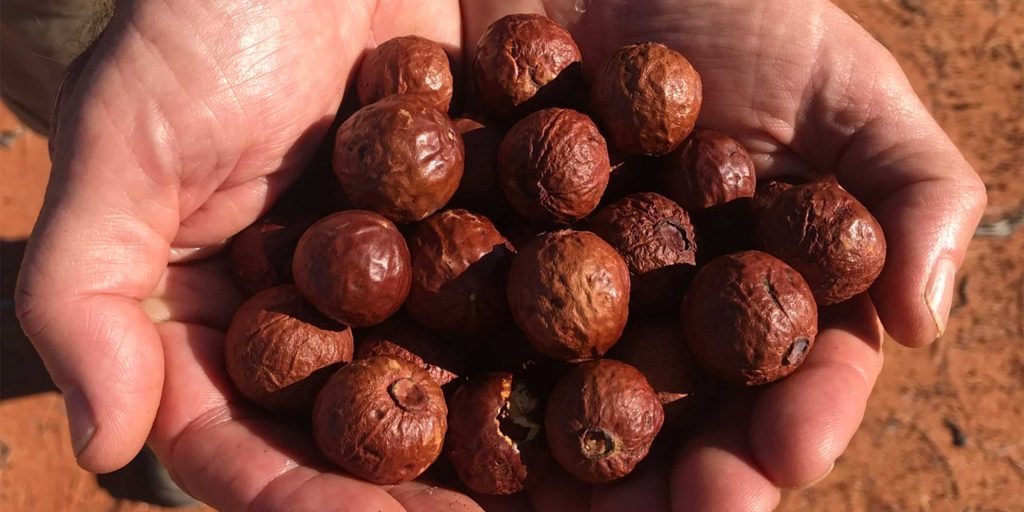
Cute versus commercial
People have long used incense sticks made of sandalwood, before they became popular in people’s homes. More recently, the cosmetic and pharmaceutical industries have incorporated sandalwood oil into their products. The result has been over-harvesting of sandalwood. The situation is frustrating for researchers like Richard.
“People know that the sandalwood tree is becoming extinct in the wild, but they are still ripping them out as fast as they can because of the plant’s commercial value. It’s exasperating.
“When harvested, sandalwood is selectively pulled out of its natural environment or community. A harvester goes into that community and removes the biggest and best trees without any thought around why it’s there or what role the tree plays in the natural environment. We aren’t considering the ecological value and we have no idea what that does to the dynamics of that community.
“Even when I speak with First Nations communities who’ve been involved in sandalwood harvesting in the past and explain that it’s dying out, they’re shocked.
“Most people will never see a sandalwood tree. But what if it was a warm and fuzzy creature, like a penguin? What if we said the world’s total population of king penguins are dying out and they’ve had no babies for 50 years. We’d be horrified and saying, ‘we need to do something about this’. But no one is saying anything about sandalwood.
“But we can create the sandalwood scent artificially. They don’t need to pull these trees out of the landscape. But it’s much cheaper to pull a tree out of the bush.”
Ecological research uncovers a dangerous chain reaction
Richard explains that every element of our environment, even a single plant, plays an important role in the circle of life.
“People say ‘so what if you lose a plant’. But hemiparasitic trees have a special role in the landscape. They have unique fruits that are a huge source of nutrients for a range of birds and animals. And these trees tend to flower and drop fruit when nothing else is available. They are important sources of nectar, fruit and nuts. If the trees disappear so does the food source – at a time when there’s not much around.
“And that has a flow-on effect because everything has a role in keeping that web of life dynamic working. As soon as you take one element out – like these trees – you’ll end up with an imbalance in the natural environment. The boodies and woylies have already disappeared from this part of the world. It’s all connected.”




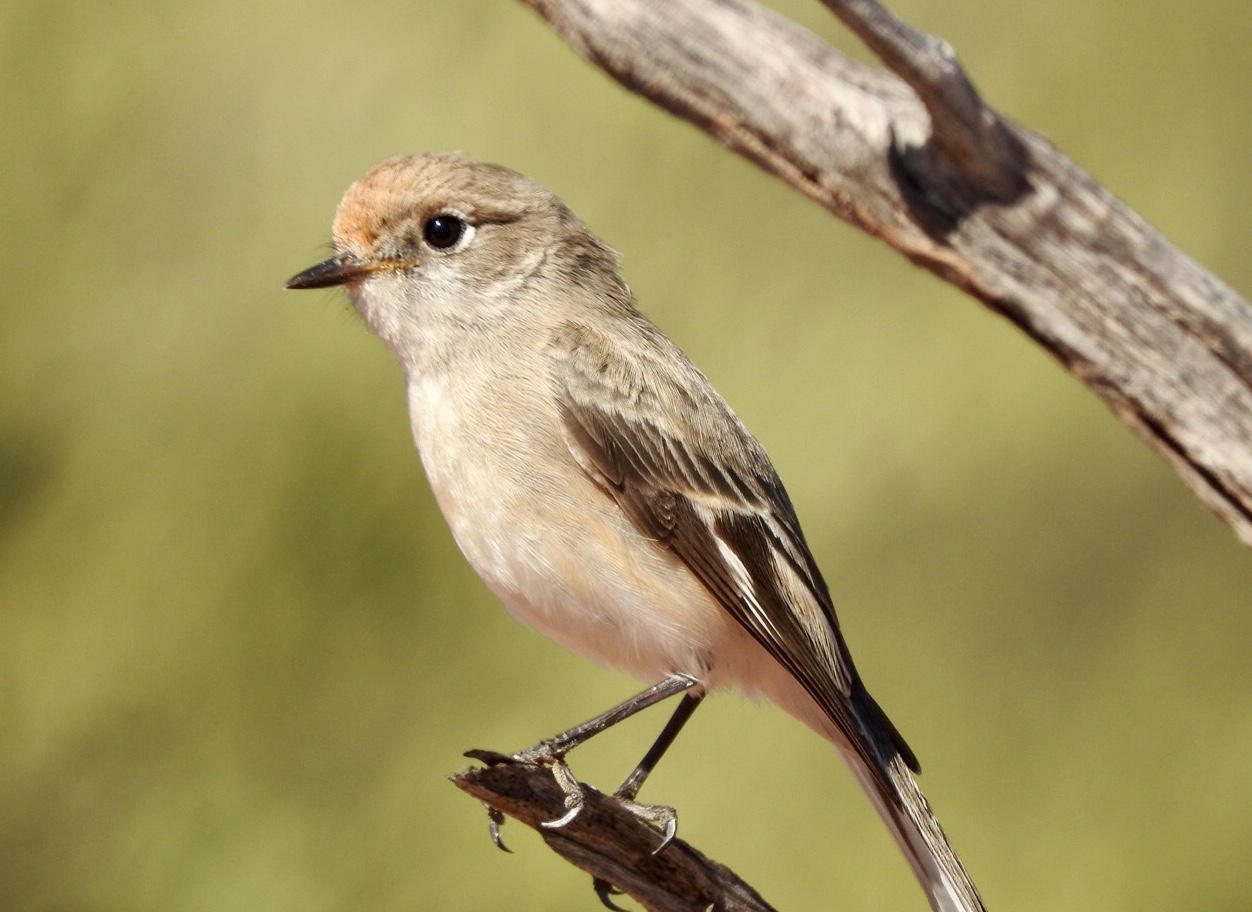
Camping out in search of ecological research data
Richard has already collected a year’s worth of university ecological research data in the semi-arid rangelands of mid-west Australia from three remote Bush Heritage Australia (BHA) reserves.
“We do this ecosystem research project in partnership with BHA. We know the sandalwood tree is dying out, so if my research demonstrates that they do have an important value in the landscape, then the reserve managers will need a strategy to ensure they can artificially regenerate the landscape with sandalwood.
“This really is a field-based project. You can’t replicate this in a lab. So, the more time I am in the field the better.
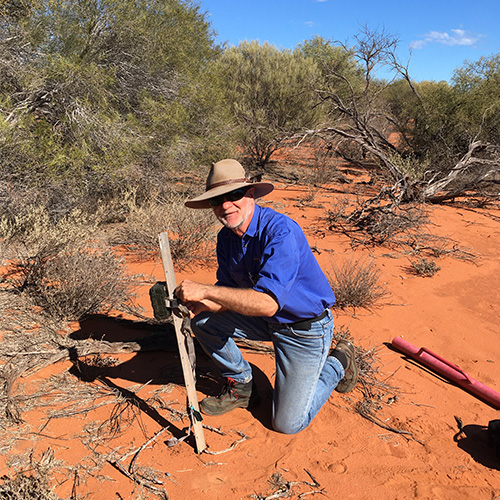
“Fieldwork can be a lot of hard, dirty work, crawling around on the ground on your hands and knees, inspecting layers of leaf litter, and identifying the local wildlife (sometimes minuscule in size). All the while dealing with zillions of flies, and trying to find a patch of shade to escape the blazing sunshine.
“I’ve had remote camera traps out for a more than a year and have been doing timed observations. That’s where I sit in a community and just watch a tree – as well as three or four other control trees adjacent to it. I record what animals visit the sandalwood and what they do. I try to ignore the bush flies, March flies and ants that want a piece of me.
“But it’s also a lot of fun. Especially when checking the results of the camera traps and finding something really exciting.
“We’re already getting some interesting results that will inform and guide this ecosystem research project as it unfolds over the next couple of years.”
Do you want to help save our endangered species?
There’s never been a more important time to focus on our wild environments and endangered species. Getting hands-on experience as you learn is key to making a difference. So whether you are just starting out in environmental management, progressing your knowledge of wildlife, or keen to follow Richard’s example and move into ecological research – at Charles Sturt University you can.


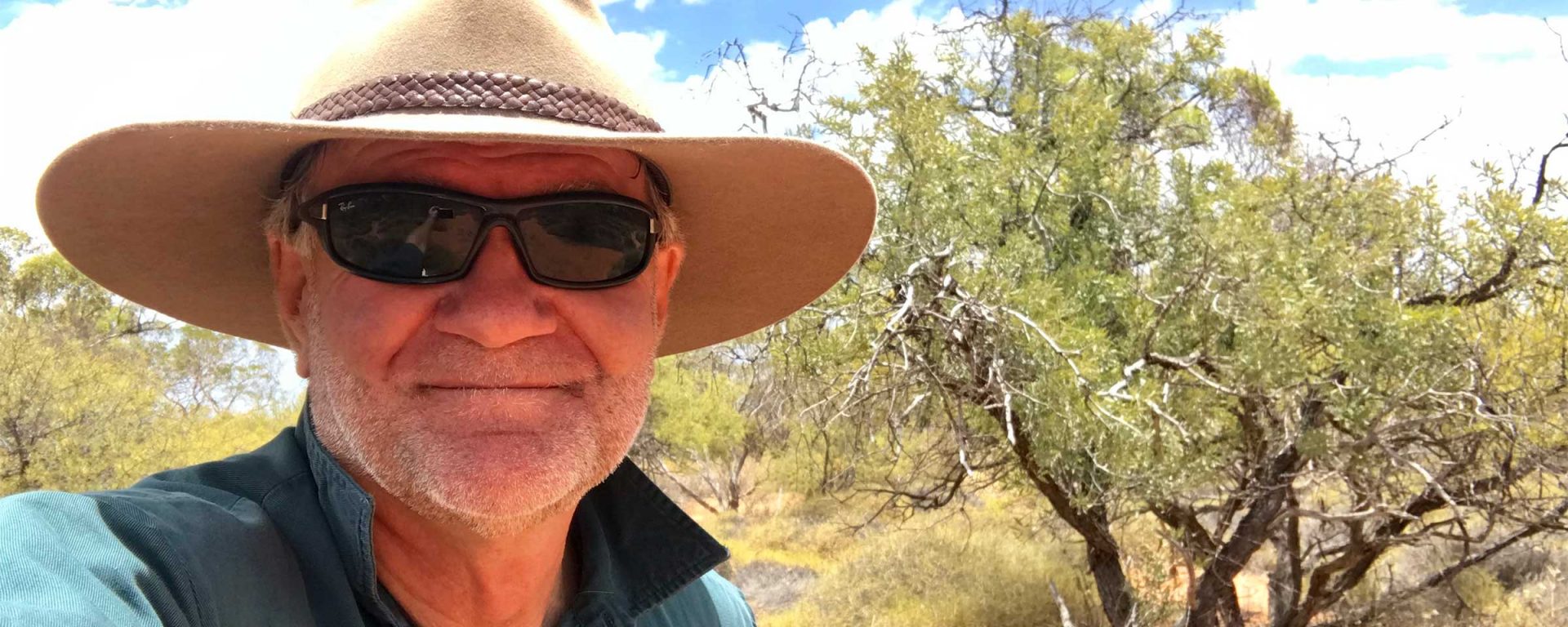
You must be logged in to post a comment.